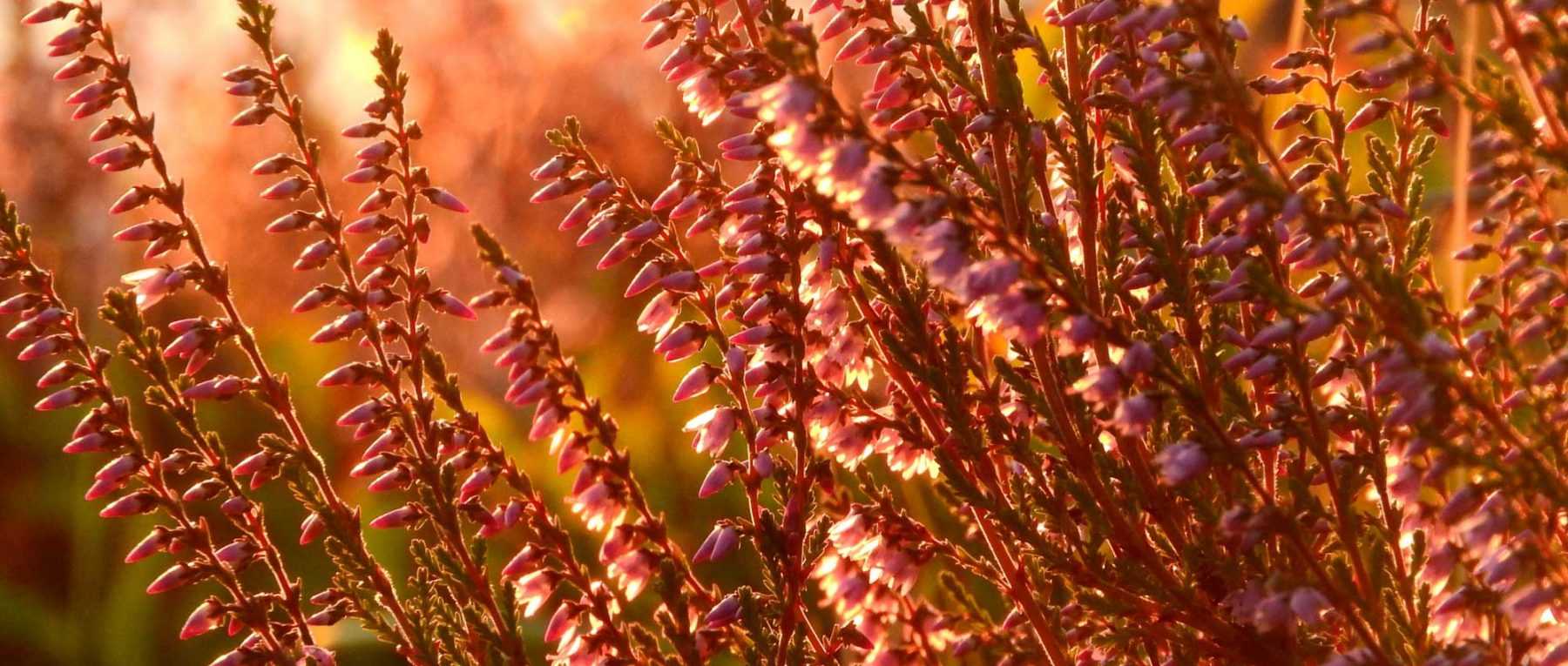
Heathers: Planting, Pruning and Care
Contents
Heather in a few words
- Heather is THE foolproof plant that thrives in all challenging conditions
- It produces abundant blooms of small white, purple or pink bell-shaped flowers
- Heather can be planted in borders, rockeries or containers
- Its dense, evergreen foliage leaves no room for weeds
- By alternating varieties, you can enjoy staggered flowering throughout the year
Our Expert's Word
Heather is a rather ground-covering plant with fine foliage that bears a multitude of small bell-shaped flowers in pink or white. Winter heather, from the Erica genus, adds colour to the garden during a season when flowers are scarce. Conversely, summer heather, Calluna vulgaris, offers summer blooms that sometimes last until mid-autumn, but the plant remains decorative in winter thanks to its evergreen foliage. You can alternate varieties to enjoy their blooms throughout the year! These are generally low-growing plants, perfect for borders, rockeries, or dressing the front of flower beds… But there are also shrubby heathers, such as Erica arborea, which flowers in spring and can sometimes reach 4 metres in height.
Heathers are easy-to-grow plants. They require very little maintenance, don’t need fertiliser, and can do without watering, except during prolonged drought. They prefer rather acidic, poor, well-draining soils and sunny or lightly shaded positions. They propagate easily by layering. In the garden, they pair beautifully with other ericaceous plants: rhododendron, camellia, Japanese andromeda… They are also excellent pollinator-friendly plants!
Botany
Botanical data
- Latin name Calluna sp, Erica sp.
- Family Ericaceae
- Common name Heather
- Flowering possible year-round depending on varieties
- Height often under 50 cm
- Exposure sun or partial shade
- Soil type well-drained, rather acidic
- Hardiness variable but often around – 20 °C
Heathers are a group of creeping subshrubs with bell-shaped flowers, comprising between 800 and 900 species. Many grow in South Africa, while others are native to Europe or Asia. In France, you can find wild heather like common heather (Calluna vulgaris) and several Erica species, such as bell heather (Erica cinerea), Cornish heath (Erica vagans), or tree heath (Erica arborea). They mainly grow in heathlands and on siliceous soils, in open areas or woodland… Particularly in western France, sometimes in Brittany, and in Mediterranean scrubland. While Erica includes countless species, Calluna vulgaris is the only species in its genus, but it has been hybridised to produce hundreds of varieties. There are other closely related genera also considered heathers: Daboecia and Bruckenthalia, though these are rarer in cultivation.
Heathers belong to the Ericaceae family, which takes its name from them. This family also includes, among others, rhododendrons, strawberry trees, Japanese andromeda (Pieris), mountain laurel, wintergreen, as well as small fruit shrubs like blueberries, lingonberries and cranberries (Vaccinium).
Heathers form small shrubs or bushes with a very spreading habit. They are low-growing, mat-forming plants. Most cultivated varieties reach a maximum height of 30 to 50 cm. However, there are tree-like heathers, such as Erica arborea, which can grow up to 5 metres tall.
Depending on the variety, heathers can flower throughout the year. Common heather is a summer-flowering heather: the typical species blooms from June-July until September, but there are also varieties that flower until December. Erica heathers, on the other hand, tend to flower in winter, blooming from October-November until March-April. As for tree heath Erica arborea, it produces white flowers in spring… Don’t hesitate to combine different species and varieties to enjoy them all year round!
In Erica heathers, the flowers consist of four fused petals, making them resemble small bells (these are called urceolate flowers, like those of grape hyacinths). The stamens sometimes protrude beyond the end of the urn. Four green sepals surround the petals. The flowers are usually grouped in clusters, sometimes in whorls or panicles. In heathers (Calluna), the flowers form small bells gathered in spikes and composed of four coloured sepals, resembling petals, slightly longer than them. The petals, not fused, are located inside the bell formed by the sepals. Heathers have eight stamens. Erica verticillata has an original flowering, with very elongated, whorled flowers.
Heather flowers range from white to deep pink, almost red, offering a whole range of subtle shades, with flowers that can also be very pale pink, or bright pink… And sometimes leaning towards mauve, lilac, almost violet. Erica scoparia has an original green and pink flowering. You can find coloured common heathers in bright tones in shops: blue, yellow, orange, red, green, etc. This is a fine layer of paint applied to the flower bud. The plant will remain this colour for one flowering season, then return to its original colour when it blooms again the following year.
Heathers are excellent nectar plants. Heather honey is even made! Winter-flowering species have the advantage of providing nectar to insects at a time when there are very few flowers in the garden.
Heather leaves are evergreen, making the plant very decorative in winter. Those of Erica are linear, elongated, resembling conifer needles. They are often less than a centimetre long. They are whorled, often in threes or fours. They have a groove on the underside. Those of heathers (Calluna) form overlapping scales. They are opposite, elongated, thick, arranged in four rows. They are much smaller than those of Erica.
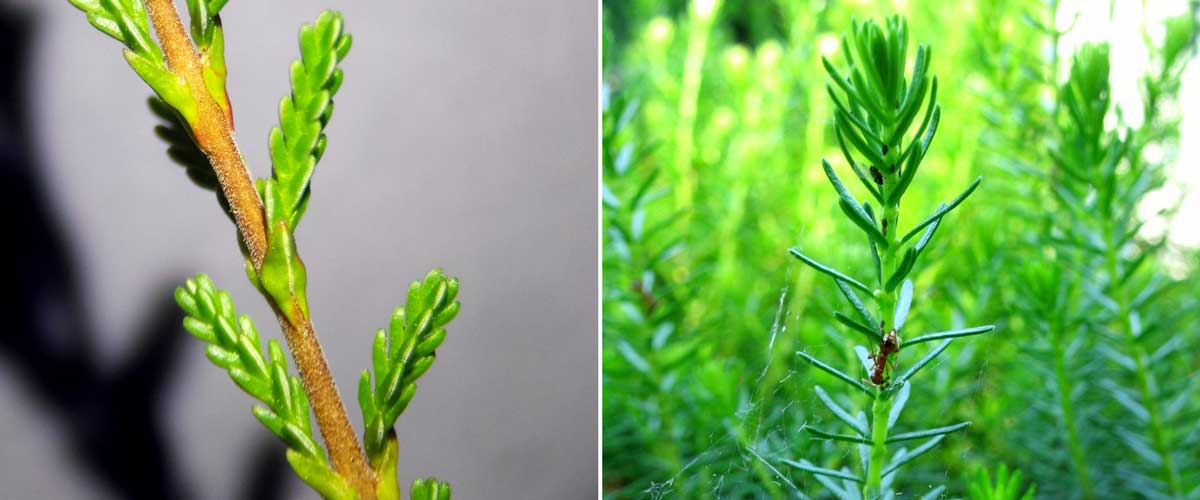

Foliage of Calluna vulgaris (photo Stefan Lefnaer) and that of Erica carnea (photo Tomasz Nemo5576 Górny)
The leaves are often dark green, beautifully highlighting the white or soft pink flowers. But they can also be light green, or silvery grey. The colours sometimes change with the seasons. The heather Erica darleyensis ‘Eva Gold’ stands out for its very bright, almost yellow foliage. In the variety ‘Spring Torch’, the new spring shoots take on a red hue.
The heather fruit is a small four-chambered capsule.
The main varieties of heathers

Erica carnea December Red - Winter Heath
- Height at maturity 25 cm
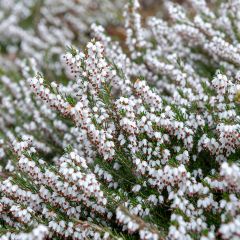
Erica carnea Springwood White - Winter Heath
- Height at maturity 25 cm
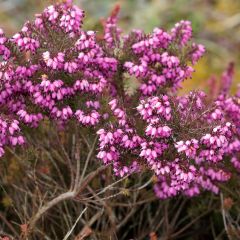
Erica darleyensis Kramers Rote - Winter Heath
- Height at maturity 35 cm
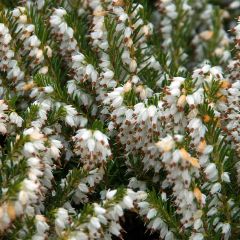
Erica darleyensis f.albiflora Silberschmelze - Winter Heath
- Height at maturity 35 cm
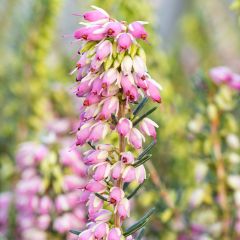
Erica darleyensis Ghost Hills - Winter Heath
- Height at maturity 40 cm
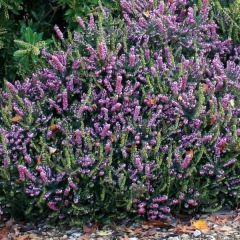
Erica darleyensis Winter Belles PhoebeWinter Heath
- Height at maturity 50 cm
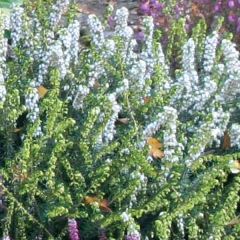
Erica darleyensis Winter Belles Katia - Winter Heath
- Height at maturity 50 cm
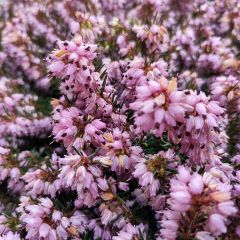
Erica darleyensis Spring Surprise - Winter Heath
- Flowering time April to June
- Height at maturity 35 cm
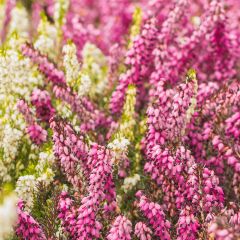
Calluna vulgaris Marlies - Heather
- Flowering time September to November
- Height at maturity 30 cm
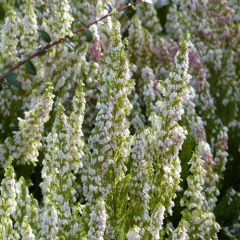
Erica arborea GREAT STAR Le Vasterival - Tree Heath
- Flowering time April to June
- Height at maturity 1,50 m
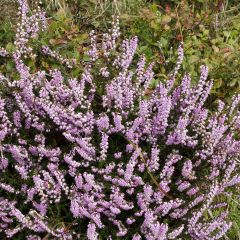
Calluna vulgaris Allegro - Heather
- Flowering time October, November
- Height at maturity 40 cm
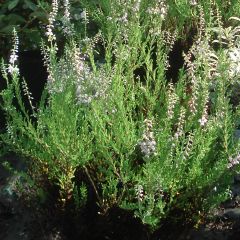
Calluna vulgaris Spring Torch - Heather
- Flowering time September to November
- Height at maturity 35 cm
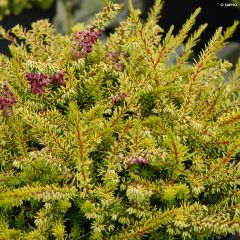
Erica darleyensis Eva Gold - Winter Heath
- Height at maturity 40 cm
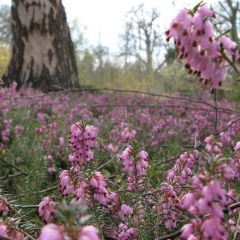
Snow heather - Erica carnea Jenny Porter
- Height at maturity 30 cm
Discover other Heather
Planting heather
Where to plant?
Heather thrives best in a sunny position, or possibly in partial shade. The winter heath Erica carnea can grow in shade.
Heather tolerates poor soils. The ground must be well-draining above all, to prevent waterlogging and root rot. Heathers adapt very well to sandy soils! Avoid heavy, clay soils as they retain water… or be sure to improve drainage by adding a layer of gravel or volcanic rock to the planting hole.
Heathers prefer acidic soils. Most varieties tolerate lime rather poorly. We recommend adding some ericaceous compost when planting. Some, such as Erica darleyensis, Erica carnea or Erica vagans, can however grow in slightly alkaline soil.
Heather is a plant that withstands urban pollution well. It can also be planted in coastal gardens, as it resists salt spray.
When to plant?
You can plant heather all year round. Just avoid periods of frost or extreme heat.
How to plant?
Space plants 30 to 50 centimetres apart, though this varies depending on each variety’s spread. We recommend planting them in groups of five or seven at minimum. They create a more striking effect when clustered together, forming vibrant carpets at the front of borders or beneath shrubs. Tree heathers can be planted as standalone specimens.
- Soak the rootball in a basin of water to moisten it.
- Dig a planting hole. You can add ericaceous compost and drainage materials (gravel, volcanic rock…), especially if your soil is heavy.
- Place your heather in the planting hole.
- Backfill with soil, then firm down.
- Water thoroughly
- We recommend mulching with pine bark.
Continue watering regularly during the first year, but avoid overwatering.
Maintenance
Heathers require very little maintenance. They don’t need fertiliser; in fact, they prefer growing in rather poor soil. They generally don’t require watering. Water them only during their first year after planting, and subsequently during prolonged dry spells. Preferably use rainwater rather than tap water, which can sometimes be too hard.
Prune your heathers once flowering has finished. Trim back young shoots with secateurs to restore a nice, rounded and compact shape to the clump. Avoid cutting into old wood.
Heathers are hardy plants, rarely affected by disease. However, they can suffer from fungal diseases if grown in heavy, water-retentive soil or in hot, humid conditions. Phytophthora (Phytophthora cinnamomi) can quickly kill entire shoots. They may also be affected by rhizoctonia or pythium… The best prevention method is to grow them in well-draining compost. Cut off and burn affected parts to limit the spread of these diseases.
Propagation
Heathers can be propagated by division or from seed, but the simplest and most effective methods are cuttings and layering.
Layering
You can layer heather in spring. This is the best technique for propagating heather! They sometimes layer naturally when their spreading stems touch the ground.
- Choose a branch on the outer edge of the clump.
- Dig a shallow trench just beneath the branch.
- Gently bend the branch down to place it in the trench.
- Secure it in place with hooks. The tip of the branch should be upright, positioned vertically. You can use a stake.
- Cover the rest of the branch with compost mixed with sand.
- Water generously.
Continue watering regularly, then, once the layer has taken root, cut the branch connecting it to the parent plant. You can then dig up the new plant and transplant it into your garden.
Cuttings
Heather can also be propagated from cuttings in summer, around August.
- Prepare a pot by filling it with a mix of sand, compost, and ericaceous soil. Moisten the growing medium.
- Take a semi-hardwood cutting (a shoot from the previous year) five to ten centimetres long, from the variety you wish to propagate. Make a clean cut with a sharp knife, just below a leaf node.
- If there are flowers, remove them. Also strip the leaves from the lower third of the cutting.
- Insert the cutting into the growing medium.
- Firm the soil around it to avoid air pockets.
- Place the pot in a bright spot but out of direct sunlight.
→ Learn more in Marion’s tutorial: How to propagate heather?
Association
Since heathers make a more beautiful display when planted in groups and offer staggered blooms throughout the year, we recommend combining different varieties! You’ll enjoy their flowers for longer. For example, plant summer heather, Calluna vulgaris, with winter heather, Erica darleyensis, and perhaps add the tree heather Erica arborea, which blooms in spring.
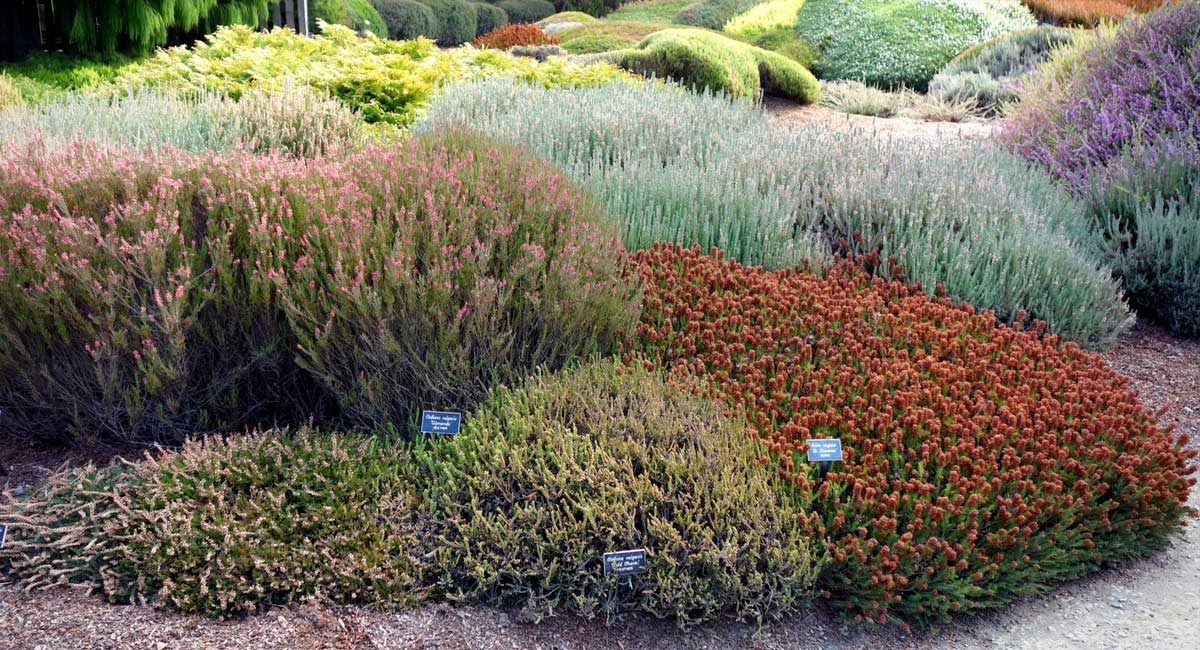

You can mix different heather varieties! Here, Calluna vulgaris ‘Wynanda’, Calluna vulgaris ‘Gold Charm’ and Erica vagans ‘St Keverne’
Heathers are perfect for creating a low, colourful border. You can plant them along pathways, either alone or combined with other perennials… Or place them at the front of a flowerbed, in front of taller plants. Due to their often compact and low-growing habit, they pair well with ornamental grasses for lightness and, especially, with shrubs for height. Also take advantage of the decorative foliage of ferns! Used as ground cover beneath trees or shrubs, heathers will suppress weeds while adding a splash of colour. They can also be planted with conifers—their needle-like, evergreen foliage complements heathers beautifully.
Of course, they naturally belong alongside other acid-loving plants. Use them as ground cover in the foreground, just in front of shrubs like rhododendrons, Pieris, or Camellias. For a lovely winter scene, combine Erica darleyensis with the delicate, fragrant blooms of daphne. Also consider Skimmia japonica, which offers pretty spring flowers and autumn-winter berries.
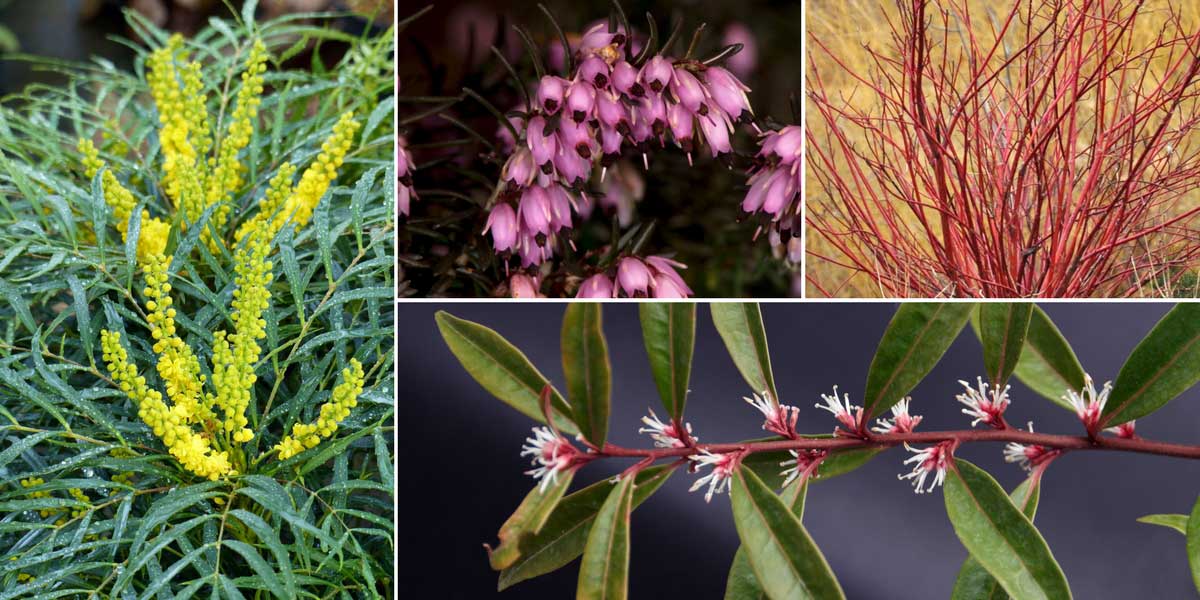

Pair winter heathers with other winter-flowering plants and the decorative stems of dogwoods. Here, Mahonia ‘Soft Caress’, Erica x darleyensis ‘Furzey’ (NY Botanical), Cornus sericea ‘Baileyi’, and Sarcococca hookeriana ‘Wouters’ (photo Hagens)
As heathers are low-growing, mat-forming plants that thrive in well-drained soil and sun, they’re ideal for rock gardens. Plant them alongside sedums, saxifrages, ornamental grasses, or small bulbs like Iris reticulata. Add a few conifers for structure and volume. For example, combine summer heather, Calluna vulgaris, with Sedum reflexum ‘Angelina’.
Pair winter heathers like Erica darleyensis or Erica carnea with winter-flowering plants: Hellebores, Cyclamen coum, snowdrops, Iris reticulata, liverleaf anemone… And with shrubs like Mahonia, Sarcococca, Grevillea, or Japanese Skimmia. Enjoy the fragrant blooms of edgeworthia, winter jasmine, or Viburnum bodnantense ‘Dawn’! You can also combine winter heathers with the colourful stems of dogwoods, particularly Cornus sanguinea.
Heathers also work beautifully in containers—try planting them in a window box with carex, ivy, cyclamen, and perhaps a few small bulbs.
→ More ideas for pairing winter heathers in our guide
Did you know?
- Medicinal properties
Heather, Calluna vulgaris, is a medicinal plant with diuretic, anti-inflammatory and antiseptic properties. It can be used as a decoction or infusion. It is employed against cystitis, rheumatism, colic and stomach pains. It is sometimes sold in capsule form. You can harvest the flower clusters before they bloom, when they are still in bud. Dry them and store them in a dark place protected from moisture. Heather honey also has medicinal properties.
- Various uses
Heather branches were once used to make brooms. This is what gives Erica scoparia its common name of Broom Heath. Its branches, which are highly flammable, were also sometimes used as kindling. Heather has also been used to make fences, roofs, ropes and baskets. Its wood has been used in sculpture and turning to make small objects.
Heather is a dye plant: when used as a decoction, its flowering tops can dye fabrics yellow.
- Heathland soil
True heathland soil is an acidic substrate resulting from the decomposition of plants such as heather and gorse. It is found naturally in sandy heathlands, on siliceous subsoil. Today, the substrate sold as “heathland soil” consists of crushed pine bark, sand, compost, peat and fertiliser, but no longer comes from the decomposition of heather. Its qualities (particularly acidity and drainage) are similar to those of true heathland soil.
Useful resources
- Our range of heathers!
- Our video on tree heather
- A blog post by Pierre – Discover the new ‘Winter Belles’ heathers!
- A blog post by Pascal – Brightening up your garden in winter
- A blog post by Virginie – 5 potted heathers: my little collection
- Heathers by use or colour: the 4 most beautiful white winter heather varieties, the 5 most beautiful pink heathers, Summer heather: the most beautiful varieties; 7 evergreen winter heathers for ground cover
- Discover 9 creeping shrubs
- Our advice sheet: How to choose a heather;
- Our advice sheet: How to grow heather in pots?
- Our tutorial: How to propagate heather?
- Our advice sheet: How to grow tree heather
- Discover the heathers and 2023 new varieties
Frequently asked questions
-
My soil is chalky, can I still grow heathers?
Although most heathers prefer rather acidic soils, the winter heathers Erica x darleyensis and Erica carnea tolerate slightly chalky soils. The same goes for the wandering heath, Erica vagans, which blooms in summer. You can test your soil's pH with a soil testing kit available from garden centres, or by pouring a few drops of vinegar onto the soil: an effervescent reaction will occur if the soil is chalky. You can slightly adjust the pH by adding well-rotted compost, ericaceous compost, sulphur or pine bark. Another option is to dig a pit, line it with landscape fabric, then fill it with garden soil mixed with ericaceous compost... But it's always best to grow plants suited to your soil type!
-
My heather is suddenly dying!
If your heather suddenly wilts and dries up without any apparent reason, it may be affected by Phytophthora (Phytophthora cinnamomi). This is a fungal disease that causes root rot and is encouraged by excessive moisture. There is no cure, only preventive measures, which mainly involve improving drainage. Remove the plant and avoid replanting any species from the same family (Ericaceae), such as rhododendrons, or conifers in that spot, as they are also susceptible to Phytophthora.
- Subscribe!
- Contents


































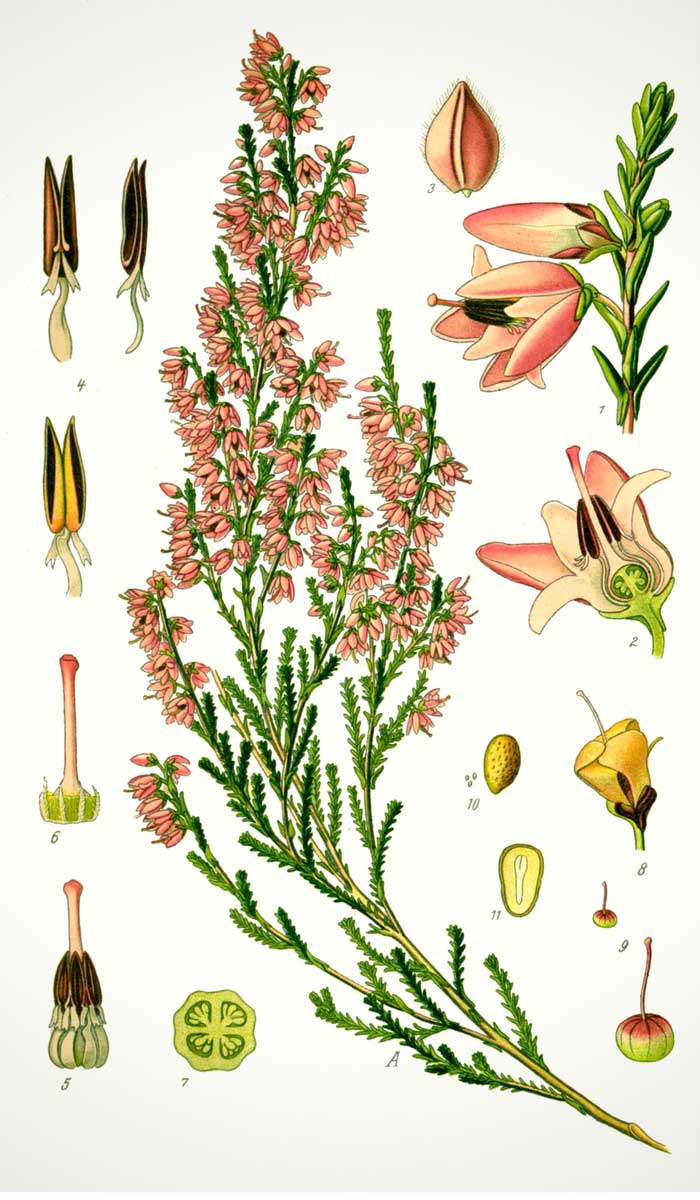
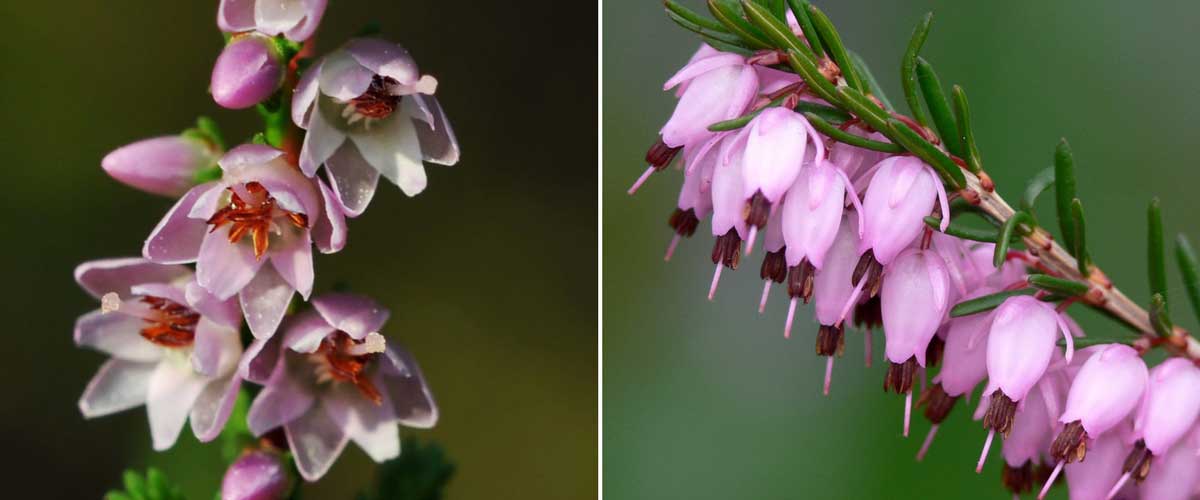

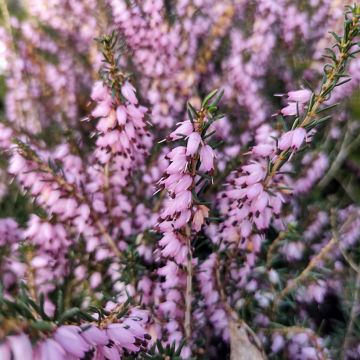


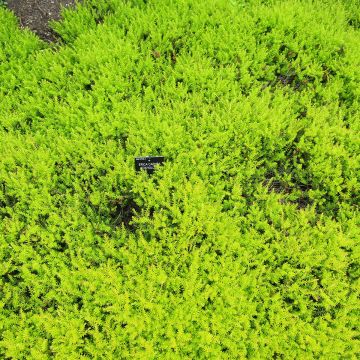
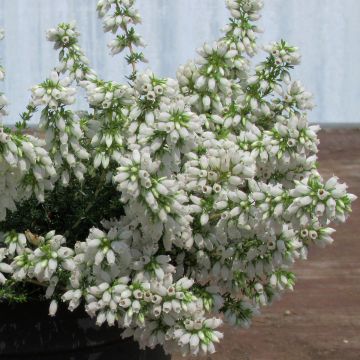
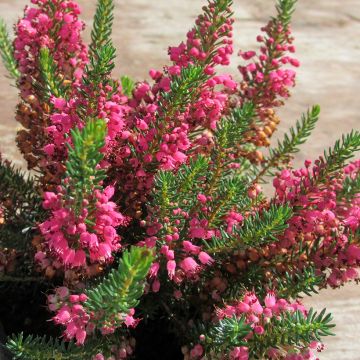

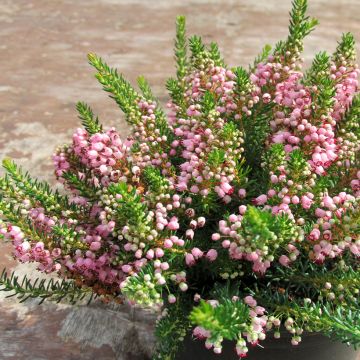
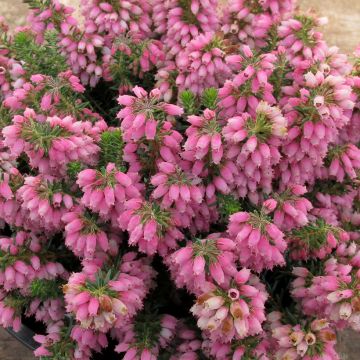
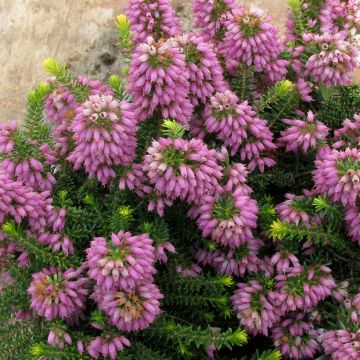
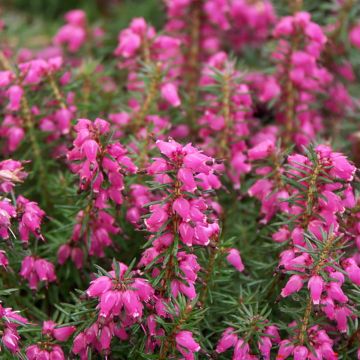
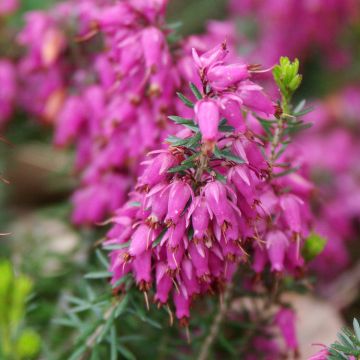
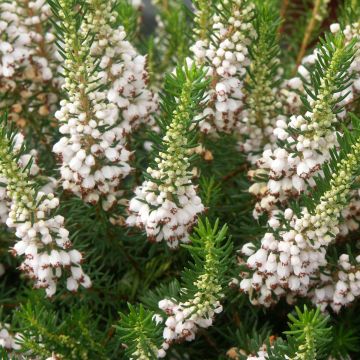
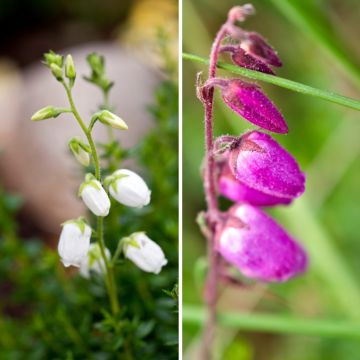
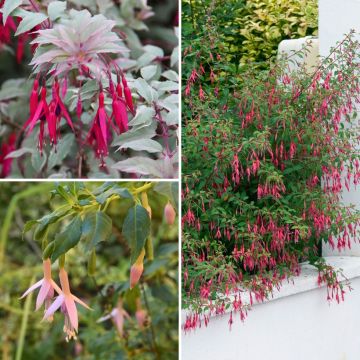
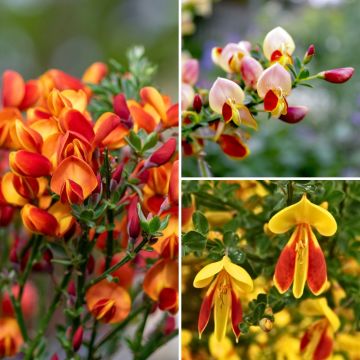
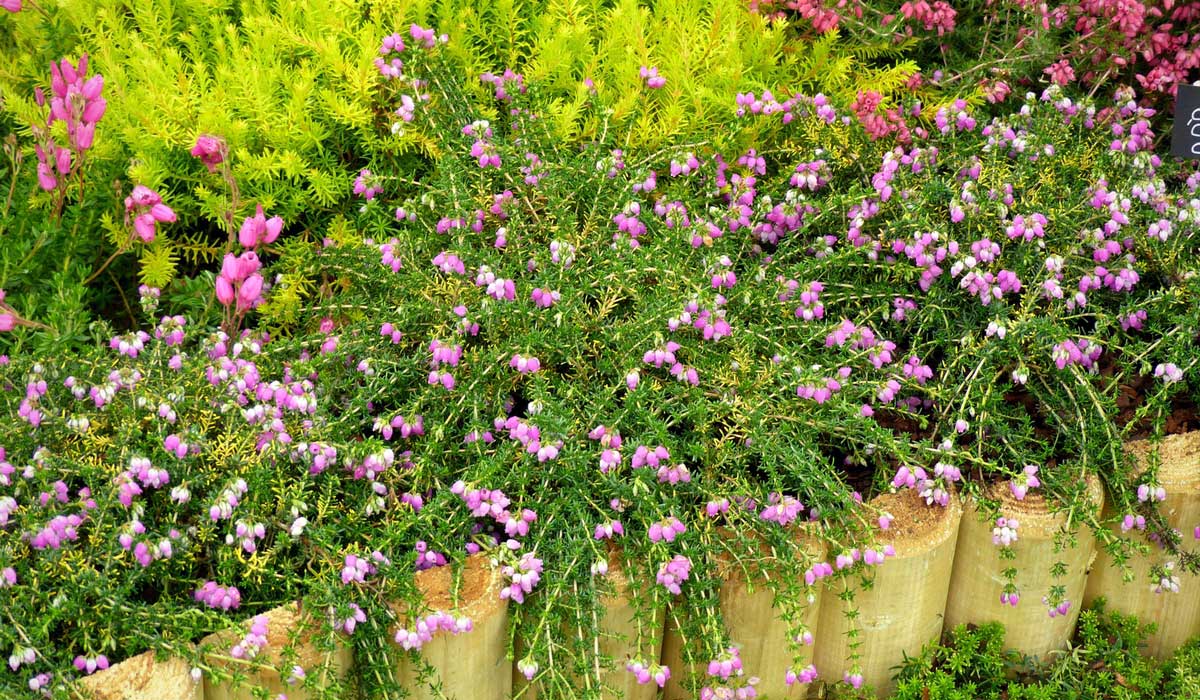
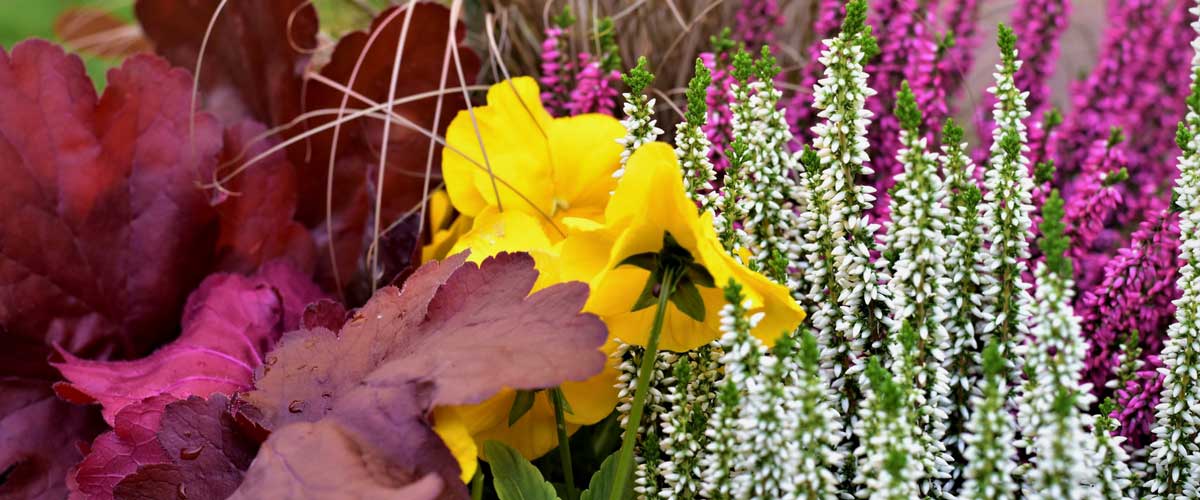
Comments